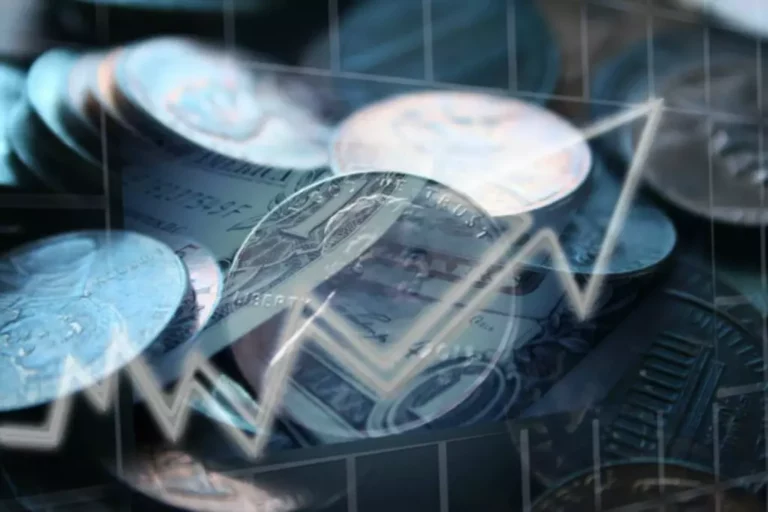It is a brand new form of yield farming, where users can lend their tokens for a sure period of time and earn rewards for offering liquidity to a platform. Liquidity mining could be accomplished on varied decentralized exchanges and tokens, permitting traders to diversify their investments to reduce dangers. By taking part in liquidity mining, merchants can spend cash on a extensive range of cryptocurrencies and earn rewards from each investment, thereby decreasing their general threat exposure. Acting as a LP is often an early step in establishing a yield farming technique. However, liquidity providers are not bonafide yield farmers until their LP tokens are maximized by being staked into multiple protocols and/or pools.

After all, you might be still the owner of your asset and might withdraw it at any time. By transferring the currency to a decentralised change, or DEX, you will also obtain a regular commission for the coins supplied. Liquidity mining can include significant dangers that traders must be aware of, including impermanent loss, project threat, and potential rug pull. UniSwap features an edge over its opponents by operating as an open-source trade. This function allows individuals to launch new liquidity pools for any token without incurring any charges, thereby selling a extra decentralized and democratic market. Curve Finance (CRV -1.02%) is a singular DEX with a liquidity pool primarily based entirely on stablecoins.
This methodology has quite a few advantages, including increased vitality effectivity compared to PoW blockchains. In staking, rewards are generally based mostly on the amount staked and the size of time the stake is locked. For example, somebody staking ADA on Cardano would possibly earn a higher reward for staking for a longer period. Liquidity mining benefits the complete cryptocurrency market by improving what is liquidity mining market liquidity. This increased liquidity additionally helps to stabilize the market, reducing volatility and creating a extra stable environment for traders. Liquidity swimming pools additionally may be weak to a singular type of fraud generally identified as a “rug pull.” Scammers set up a model new cryptocurrency and push capital into the coin through DEX services.
Liquidity Mining Execs And Cons
At its peak this yr, the Total Value Locked (TVL) for offering liquidity across the DeFi protocols exceeded $88.6 billion. Some buyers often use the phrases “liquidity mining” and “yield farming” interchangeably, however we can’t decide them as a end result of it’s neither essentially proper nor necessarily mistaken. However, you need to know that liquidity mining and yield farming might sound interchangeable. Still, the most vital difference between them is said to the truth that they’ve different goals. Most Ethereum liquidity miners on Uniswap choose the middle charge tier of 0.3%.

One of the biggest adjustments provided by the new model is the so-called ‘concentrated liquidity’, which makes the functionality of AMM extra efficient for customers. Then, each pool offers a price for both tokens, which is decided by the ratio of the two tokens. When shopping for or selling tokens from AMM swimming pools, traders pay a really small payment for each trade. This payment is additional shared out among all the pool’s depositors primarily based on a pro-rata basis.
Defi 101: What’s Liquidity Mining And How Does It Work?
The locked-in funds are the lifeblood of the DEX; with out them, trading systems would rapidly halt. The Automated Market Maker model allowed decentralized exchanges to thrive with a number of the largest providing liquidity depth that rivals even centralized exchanges. Liquidity Mining underpins this trading mannequin by incentivizing customers to deposit liquidity. There are several decentralized exchanges that incentivize liquidity providers to take part within their platforms.

The DeFi liquidity mining house is abundant with this type of staking or farming opportunity, and more swimming pools and protocols emerge by the day. Those yield farming crypto can stake their LP tokens in numerous protocols and liquidity swimming pools for so lengthy as they could select — from a number of days to several months. As the cryptocurrency and decentralized finance (DeFi) sectors proceed to increase in 2023, liquidity mining has turn out to be an more and more necessary topic that merchants and investors are keen to know. Whether you are a seasoned trader or new to the crypto scene, gaining insights into liquidity mining could probably be instrumental in shaping your investment strategy on this ever-changing financial ecosystem. Yield farming, then again, is a strategy the place users deposit their assets into a pool to earn a high return on funding (ROI). The assets are used to earn rewards via various mechanisms such as lending, borrowing, and staking.
Liquidity Mining Explained
Annual yields are measured in single-digit percentages, but Curve is less risky than the Uniswap-based options. When DeFi apps trade dollar-based worth from one trading platform to another, they are likely to faucet into this stablecoin interchange platform. Liquidity mining is a passive earnings mannequin with which investors make the most of current crypto property to generate extra cryptocurrencies on DeFi platforms.

Insurance rating is a vital issue when evaluating the platforms you’re keen to make use of. It occurs when the value of tokens in a liquidity pool varies compared to once they have been deposited. Gains often cover the losses, however the volatility could play a nasty trick, leaving you with negative returns. Decentralized exchanges need liquidity to remain afloat, in any other case users can’t commerce. Users serve the aim one of the best when exchanges supply the ability of rewards in return to liquidity supplied.
Liquidity mining is a process in which crypto holders lend property to a decentralized change in return for rewards. These rewards commonly stem from trading charges which are accrued from traders swapping tokens. Fees common at zero.3% per swap and the whole reward differs based mostly on one’s proportional share in a liquidity pool. Instead of conventional order books [the record of buy and sell orders reflecting the current liquidity], decentralized exchanges depend on good contracts commonly often recognized as automated market makers [AMM].
Create Your Free Token Metrics Account
Therefore, a smaller fee can work out to a bigger payout if that specific tier happens to be extremely active on the Uniswap buying and selling platform. A bigger stake of locked-in liquidity gives you a bigger piece of the whole pie. However, using the term mining in this title alludes to the thought that these liquidity suppliers (LPs) are on the lookout https://www.xcritical.com/ for some rewards – charges and/or tokens – for his or her efforts. However, like any investment alternative, there are additionally risks concerned with liquidity mining. For example, liquidity mining rewards can be subject to market volatility, and the value of the rewards may decrease or turn out to be worthless in the occasion of a failed project or a downturn in the DeFi market.

Liquidity mining refers to a course of the place users can earn rewards for providing liquidity to decentralized exchanges (DEXs) by depositing belongings into liquidity pools. They are supposed to incentivize customers to take part in the DEX’s liquidity, growing its total health and making it easier for other customers to trade. As of 2023, liquidity mining remains a cornerstone mechanism in the decentralized finance (DeFi) landscape. Essentially, liquidity mining is a practice the place customers provide liquidity to a decentralized exchange (DEX) or lending platform by depositing their crypto assets right into a liquidity pool. In return, they receive rewards, usually in the type of extra tokens or a share of the transaction fees generated by the platform. Liquidity mining is the process of offering liquidity to AMM-based decentralized exchanges and incomes rewards in return.
Higher Returns On Investment
Given that the Uniswap protocol is totally decentralized, it doesn’t embrace any itemizing course of both. Any ERC-20 token could be launched on the condition that there’s an obtainable liquidity pool for traders. Curve was launched in 2020 as an try to offer a sophisticated automated market maker trade with low charges for merchants and substantial financial savings for liquidity providers. Curve focuses primarily on stablecoins, due to this fact granting investors a possibility to evade extra risky crypto property and earn excessive rates of interest from their lending protocols. According to DeFi Llama, Curve is the biggest protocol with TVL of more than $20 billion. Thus, the DeFi system modified the identical old mannequin of traditional centralised monetary exchanges.
Following that, you must click on “New Position” and select the buying and selling pair to which you want to present liquidity. For instance, one of the popular pairs on Uniswap is Ethereum and Tether. Next, select a reward level tied to the completely different rates of interest charged to merchants.
This permits merchants to earn income even when the market performs poorly or can’t actively commerce. The SushiSwap group aims to provide a extensive range of economic services in the future, including buying and selling of shares, futures, and choices. For now, the platform provides liquidity mining yields similar to Uniswap’s and a good larger catalog of token pairings. However, you can only get these stellar APRs by accepting a big quantity of danger. Higher yields are normally hooked up to pairings that contain smaller crypto projects with short operating histories and limited market caps. Bugs within the DEX system’s good contracts could additionally undermine or erase your gains, and significant price changes in a single or both of the crypto pairing’s components may also harm your returns.
Liquidity mining is a process the place traders can earn cryptocurrency rewards by providing liquidity to cryptocurrency exchanges or different decentralized functions. Liquidity mining is viewed as a serious incentive and attraction for a large number of buyers. As of today, it’s been adopted by several protocols and is taken into account to be a smart and environment friendly method of distributing tokens.
To make it extra tangible, imagine you have 100 models of cryptocurrency and want to earn passive earnings. Liquidity mining would involve offering your tokens to an exchange or pool to earn rewards based on the liquidity you present. In discrepancy, yield farming would require you to lock up your tokens in a lending or borrowing platform and earn interest primarily based on components such as the lock-up interval and supply and demand.

Leave A Comment